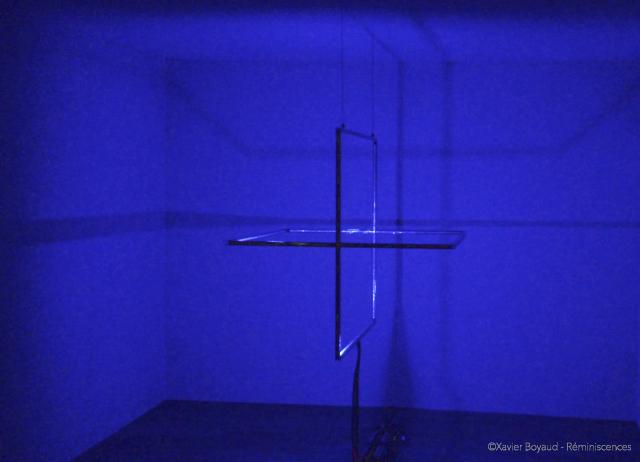
“J’utilise la lumière et l’image comme matières premières dans mon travail de recherche et de création.” (“I use light and image as raw materials in my work of research and creation.”) This is how Xavier Boyaud — a self-taught visual artist, lighting designer, scenographer, and videographer — describes his work. Vuo is one of the tools that Xavier uses to sculpt light and image.
We interviewed Xavier about his recent work. In the spirit of Vuo’s multilingual community, Xavier answered in both French and English, and we’re sharing his remarks in both languages.
Ombres Projetées (Projected Shadows) is an installation conceived and developed by Xavier and constructed by Alain Lebeon, with support from the Nord-Pas de Calais Regional Council. The viewer experiences sliding lights and shadows cast by two intertwined frames lined with 1142 LEDs.
“Cette démarche questionne et cherche… à mettre en lien la mémoire visuelle face à l’absorption de la lumière par le noir et du mouvement de l’ombre dans l’espace. Ombres Projetées… met en jeu la persistance rétinienne, par le truchement de l’intensité lumineuse et l’apparition ou l’absence de l’ombre projetée.” (“This approach… questions and tries to link the visual memory with the absorption of light by black and the movement of the shadow in space. Ombres Projetées… involves retinal persistence, through the use of luminous intensity and the appearance or absence of the projected shadow.”)
Although the LEDs are arranged in straight lines, Xavier situates them in a 3D virtual space. “L’idée est de créer des objets virtuels qui se déplacent dans l’environnement 3D de Vuo. Quand les objets touchent une LED, le LED s’allume, ou l’inverse. De ce fait je peux travailler la sculpture dans un volume 3D et pas simplement agir sur l’allumage des Leds en les faisant déplacer sur une ligne et le long des cadres.” (“The idea is to create virtual objects that move in the 3D environment of Vuo. When objects touch a LED, the LED lights up, or the reverse. Therefore I can work the sculpture in a 3D volume and not just act on lighting the LEDs by moving them on a line and along the frames.”)
“Le logiciel de restitution, développé avec Vuo et piloté par un driver de chez DMXKing, permet de contrôler individuellement chacune des 1142 LEDs RGB et ainsi donner du mouvement à l’ombre.” (“The [rendering] software, developed with Vuo and driven by a driver from DMXKing, allows individual control of each of the 1142 RGB LEDs and thus gives movement to the shadow.”)
Xavier had originally planned to control the LEDs with a Python script, but when he couldn’t find a developer to write the script, he realized he could do the implementation himself in Vuo. He found Vuo to be “une mise en place rapide et efficace pour gérer un signal DMX” (“a fast and efficient setup to manage a DMX signal”).
Ombres Projetées continues to evolve. “Je vais bientôt exposer une nouvelle fois ce projet. Je finirais ce développement à ce moment là.” (“I will soon exhibit this project again. I would finish this development at that time.”)
L’Oeil du Prince (The Eye of the Prince) is another installation in which Xavier uses Vuo. The title refers to the concept in theatrical design of a point in space where someone looking down on the stage would view the scene without any deformation. Xavier’s visual and sound installation transports the concept outside the walls of the theater. “La démarche artistique questionne la manière dont nous appréhendons l’image médiatique et l’image d’archive dans notre apprentissage de l’Histoire.” (“The artistic approach questions the way in which we apprehend the media image and the archive image in our learning of History.”)
A fragmented video is displayed on 9 screens arranged in 3D space. A video camera captures the 9 screens and, using Xavier’s technique of Images-Lumière (Light-Images), combines the fragmented imagery into a single picture, which is displayed on a monitor. The audience members stand between the screens and the camera, and thus find themselves inserted into the video.
“Le logiciel de restitution développé avec Vuo permet de répartir l’Image-Lumière sur les 9 écrans suspendus et de diffuser la création sonore en octophonie.” (“The rendering software developed with Vuo allows [the installation] to distribute the Light-Image on the 9 suspended screens and to [transmit] the sound creation in octophony.”)
“[Je] suis très content du résultat :) Le player de Vuo et l’interface fonctionne très bien, [avec un] ficher vidéo de 4,5Go.“ (“[I] am very happy with the result :) The Vuo player and the interface work very well, [with a] 4.5GB video file.“)
L’Oeil du Prince is a collaboration between Xavier (conception, scenography, creation of Images-Lumière, computer development), Michel Quidu (interpretation), Alain Lebeon (construction), and Benjamin Collier (sound composition), with support from the Nord-Pas de Calais Regional Council and the City of Lille.
L’Oeil du Prince and Ombres Projetées have been exhibited at the Maison Folie Beaulieu in Lomme, France.
The influences for Xavier’s work include Meccano and Lego toys, the artist James Turrell, and “les images d’archives de la Seconde Guerre Mondiale et la façon dont nous les percevons à notre époque” (“web archive images of the Second World War and how we perceive them in our time”).
What’s next for Xavier? In some of his future work, he plans to incorporate Leap Motion so that audience members can interact with the movement of light. He aims to “fabriquer un outil de création pour la lumière au théâtre” (“produce a creative tool for light in the theater”). Among his professional goals is “exposer en dehors de l’Europe” (“exhibiting outside Europe”). Xavier plans to continue improving his knowledge of Vuo, using Vuo in his work, and promoting Vuo in his professional circle.
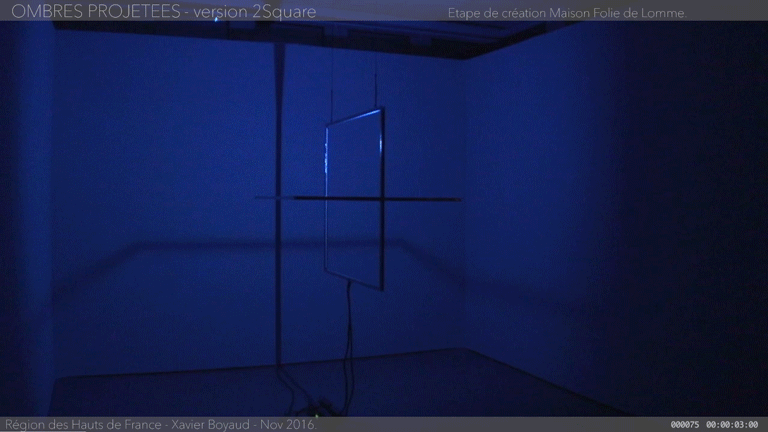
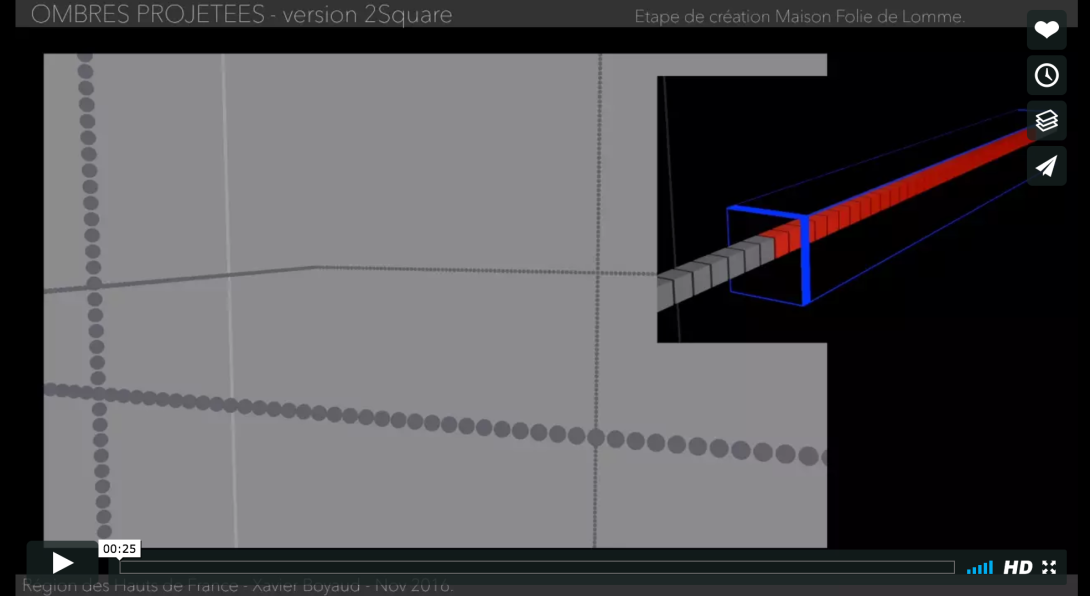
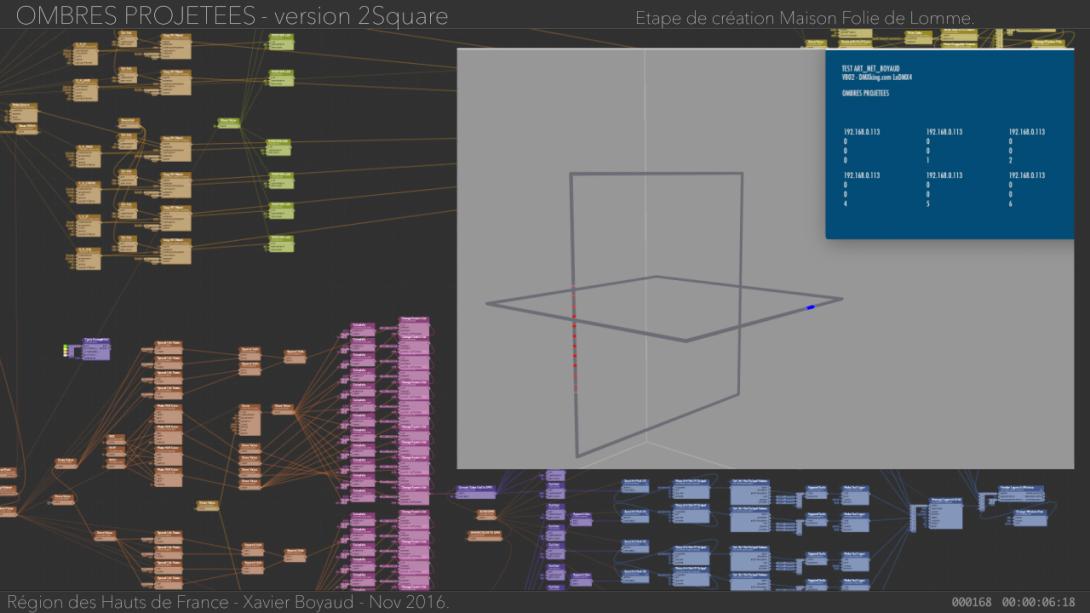
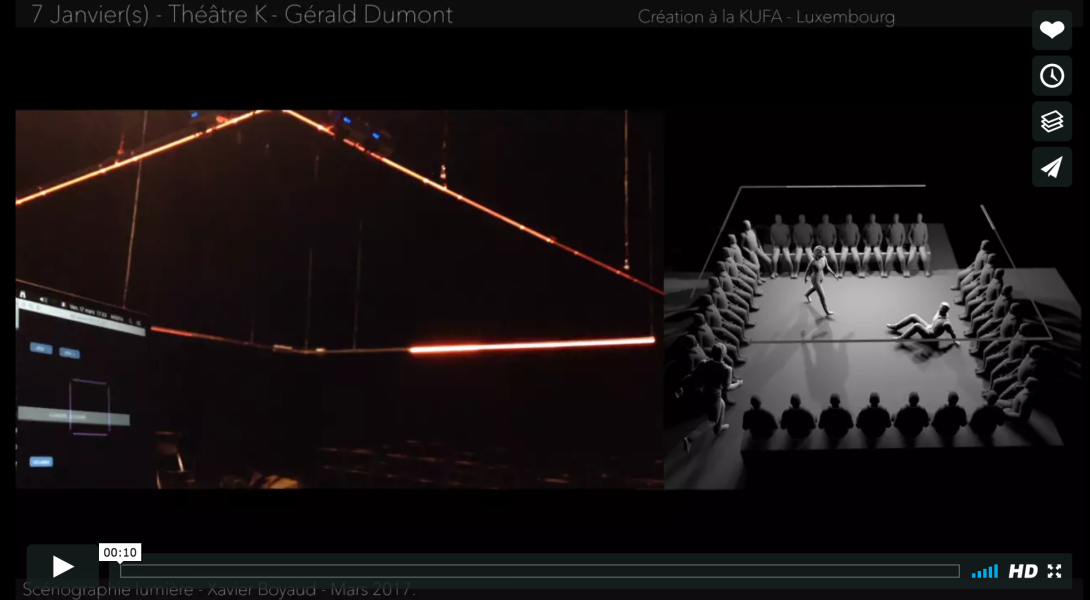
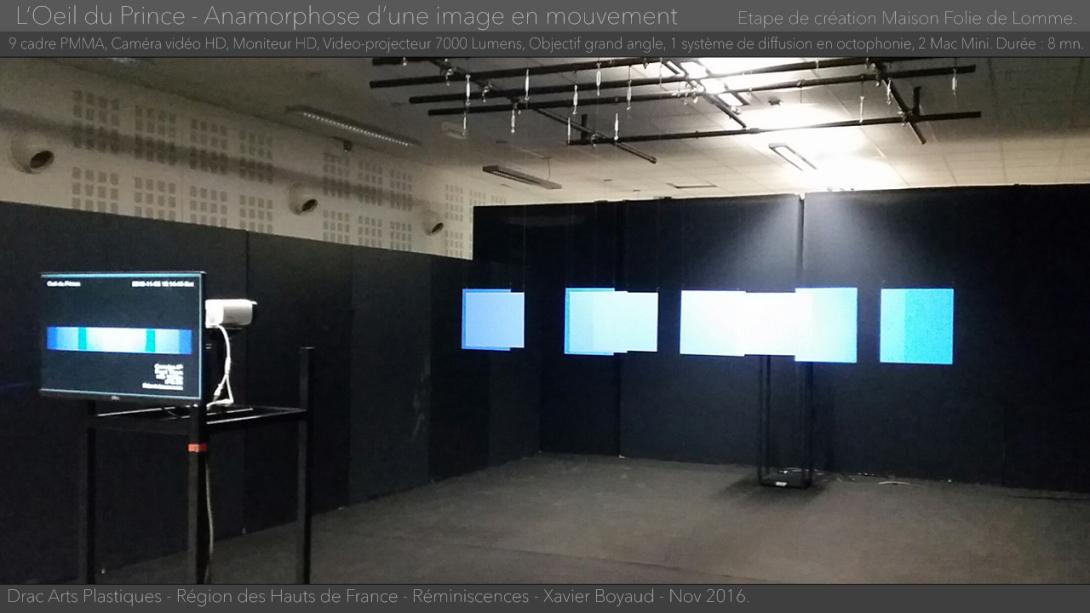
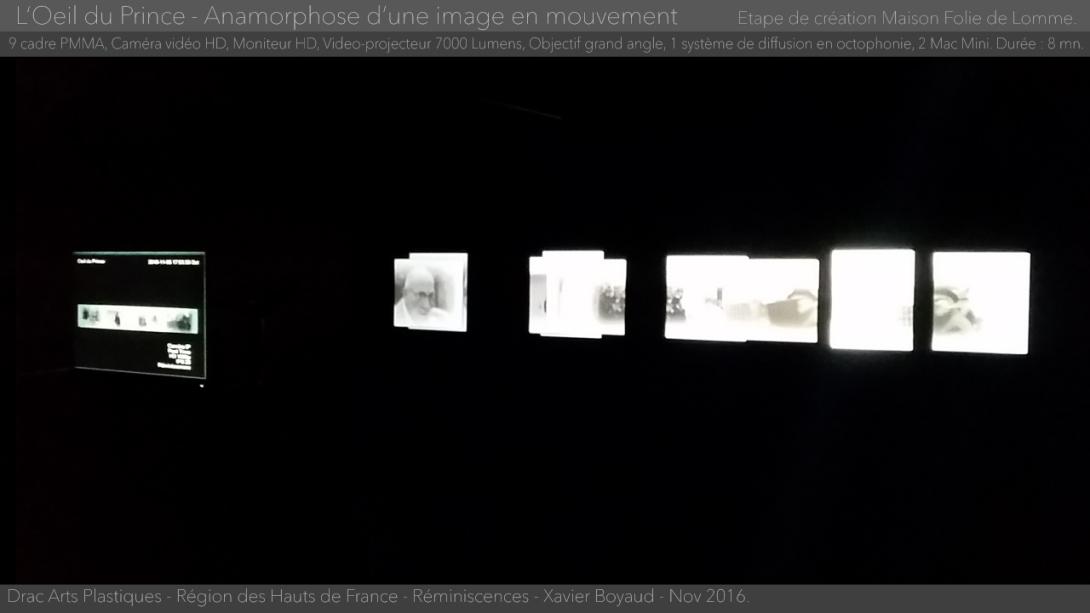
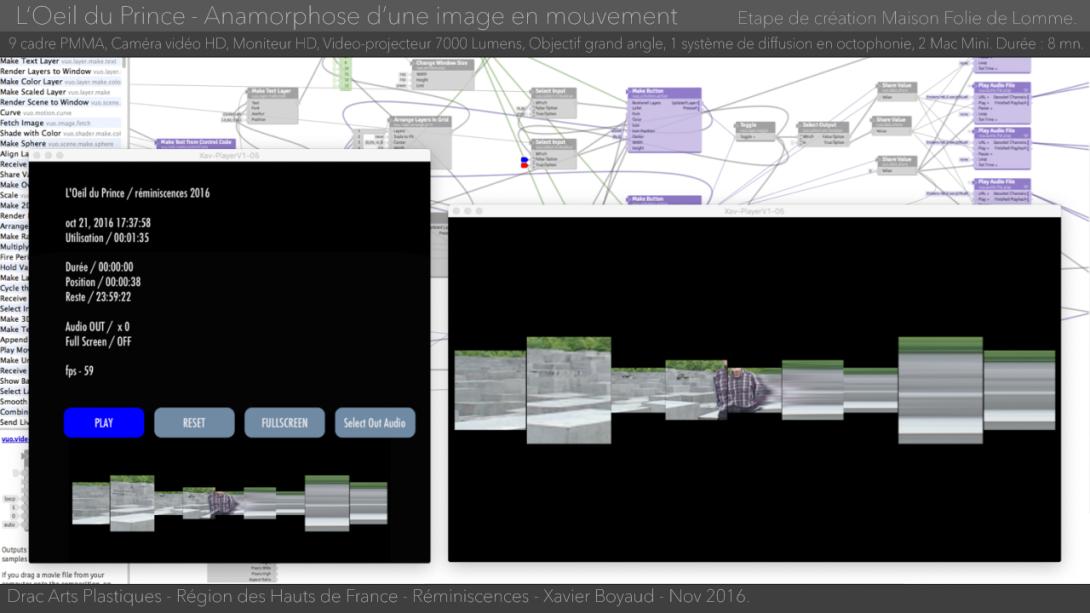
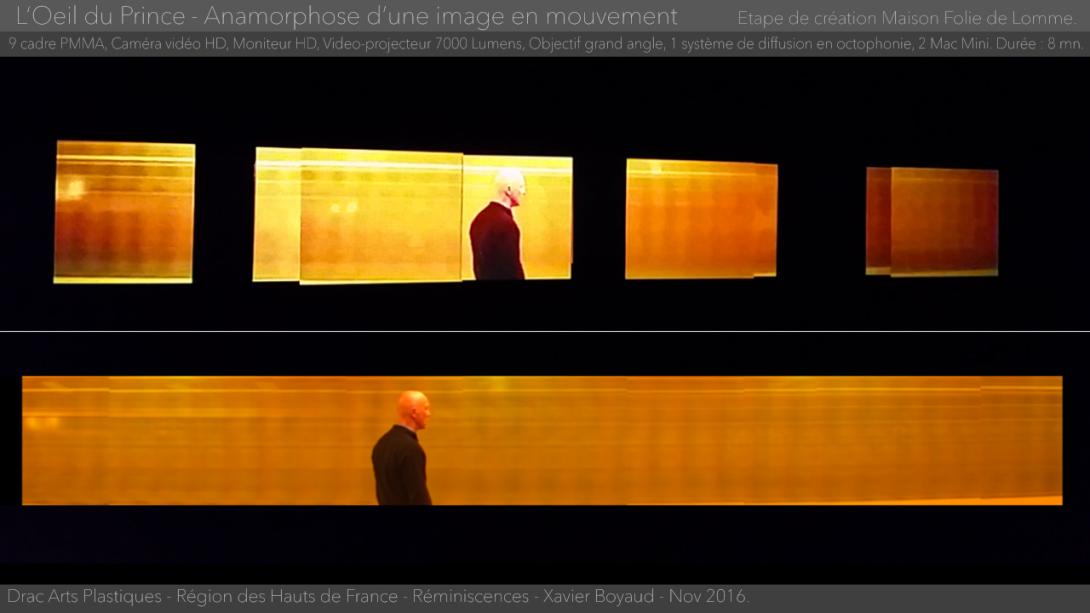
Comments